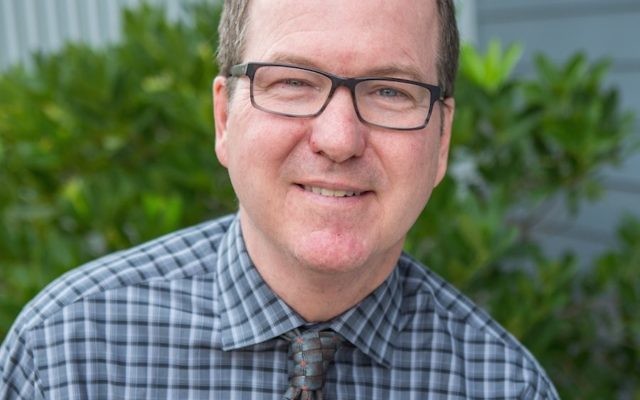The Multisensory Way to Build a Better Brain
Faculty members at Temima High School had their eyes opened to the opportunities to expand their minds Tuesday, May 3, during a presentation in the Temima Women’s Center by Allen Broyles, the assistant head of school at the Howard School.
In a workshop titled “The Amazing Minds We May Be Missing: A Crash Course in Differentiation, Neuroscience and Cerebro Diversity,” Broyles brought sense and understanding to neuroscience and the possibility of stretching our brains.
Using a slide presentation, Broyles emphasized a multisensory approach to building a better brain. We faculty members at Temima shared ideas with partners and showed where we stood on an issue by gathering in three areas of the room.
Broyles mentioned past educators, such as Marie Montessori and John Dewey, who paved the way for a multisensory approach to learning. “Give the pupils something to do, not something to learn,” Dewey wrote in “Democracy and Education” in 1916, “and the doing is of such a nature to demand thinking; learning naturally results.”
Flashing a slide overhead that showed “10%,” Broyles said that is the retention rate of students who did well on a test 30 days earlier. He urged us to increase the retention rate and build a better brain by increasing cognitive ability, effectiveness and efficiency.
A first step is to recognize that students’ brains unfold at different rates. Broyles encouraged teachers to “evaluate everything and grade nothing,” or maybe grade every third quiz. He suggested that after a teaching session, students might give feedback to their teachers on how they’re learning. He said the questions on a “Quick Check-In” might be: “What piqued my interest? What questions were raised for me? What annoyed me?”
As a teacher, I know it takes confidence to pose these questions, but the answers can help the student as well as the teacher zero in on the learning strategies that work best for that student.
Secondly, Boyles believes that “all students can benefit from a gifted program” and certainly from an enriched environment. This environment would have six major areas of learning: novel, open-ended, challenging experiences; social communication and support; multisensory activities; movement; appropriate stress management; and sufficient time.
This enriched environment has been shown to increase memory; build larger neurons, a thicker cortex and more branches; and provide inoculation from stress.
At the Howard School, Broyles encourages the use of fly swatters to hit at vowels on the board, soft Nerf ball activities, and, for children with attention deficit hyperactivity disorder, exercise balls instead of chairs to sit on. He also gives students breaks to run around the perimeter of the building.
“Basically, we are meant to be fit,” he said. “And intense exercise grows brain cells.”
His view of computers and technology is that they are “tremendously powerful” and “tremendously dangerous.” He equates giving children free use of the Internet to letting them “walk by themselves at midnight in Piedmont Park.” But he said the risks shouldn’t prevent children from using these “world-expanding tools” for learning.
Our brains are like rubber bands that can be stretched, and students can increase their IQs, Broyles said. He showed two charts under the title “Ability to Change Brains Decreases Over Time.” The first one, labeled “Normal Brain Plasticity Influenced by Experience,” showed a descending ability to change brain power. But the second chart, labeled “Physiological ‘Effort’ Required to Enhance Neural Connections,” showed that from birth to 70, the ability to grow our brains increases.
That’s good news for everyone.
To find out more about this topic, Broyles recommends the following books: “Brain Rules: 12 Principles for Surviving and Thriving at Work, Home, and School” by John Medina; “How We Learn: The Surprising Truth About When, Where and Why It Happens” by Benedict Carey; “Why Don’t Students Like School?” by Daniel Willingham; and “Outsmarting IQ: The Emerging Science of Learnable Intelligence” by David Perkins.





comments